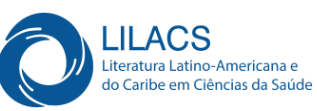The permanence of teriomorphic symbols in art and in the psyche
DOI:
https://doi.org/10.5433/2236-6407.2022.v13.47277Keywords:
teriomorphic symbols, art, psyche, Aby WarburgAbstract
Teriomorphic symbols refer to animals. The importance they exercise can be demonstrated by the permanence of these symbols both in art (parietal paintings to contemporary graffiti) and in the psyche. The perpetuation of symbols and themes is dealt with by studies such as those by Aby Warburg in art history: Kulturgeschichte, Pathosformel and Mnemosyne. The recurrence of themes, emotions and behaviors reveals the perpetuation of symbols intertwined with culture. This symbolic recurrence, in psychic terms, is understood by C.G. Jung through the notions of archetype and collective unconscious. Contemporary authors of Warburg and Jung and their respective concepts, as well as the presentation of some works of art illustrate the importance of teriomorphic symbols. It is hypothesized that it is a psychic need to unite the biological nature, its instinctive desiring force with the sphere of the mind and the sense of being constantly renewed.
Downloads
References
Candau, J. (2016). Memória e identidade. São Paulo: Contexto.
Cirlot, J.-E. (2005). Dicionário de símbolos. São Paulo: Centauro.
Colman, W. (2016). Act and Image: The Emergence of Symbolic Imagination. New Orleans, Louisiana: Spring Journal Books.
Didi-Huberman, G. (2013). A imagem sobrevivente: História da arte e tempo dos fantasmas segundo Aby Warburg. Rio de Janeiro: Contraponto. (ArteFíssil; 5).
Durand, G. (2002). As estruturas antropológicas do imaginário. 3. ed. São Paulo: Martins Fontes. (Coleção biblioteca universal).
Eco, H. (2014). História da feiura. Rio de Janeiro: Record.
Gaillard, C. (2017). The Soul of Art: Analysis and Creation. College Station: Texas A&M University Press.
Freud, S. (2013). Uma recordação de infância de Leonardo da Vinci. In S. Freud, Obras completas, volume 9: observações sobre um caso de neurose obsessiva [“O homem dos ratos”], uma recordação de infância de Leonardo da Vinci e outros textos (1909-1910) (pp. 113-219). São Paulo: Companhia das Letras.
Gombrich, E. H. (1986). Aby Warburg: An Intelectual Biography (2a ed.). Chicago-Oxford: The University of Chicago Press-Phaidon.
Jung, C. G. (1944/1991). Psicologia e alquimia (OC, Vol. XII, 4ª. ed.). Petrópolis: Vozes.
Jung, C. G. (1934-5/2006). Os arquétipos e o inconsciente coletivo (OC, Vol. XI/1, 4ª. ed.). Petrópolis: Vozes.
Jung, C. G. (1929/2013). A prática da psicoterapia (OC, Vol. XVI/1, 16ª. ed.). Petrópolis: Vozes.
Jung, C. G. (1957/2013). Ab-reação, análise dos sonhos e transferência (OC, Vol. XVI/2, 16ª. ed.). Petrópolis: Vozes.
Jung, C. G. (1911/2016). Símbolos da transformação (9ª. ed). Petrópolis: Vozes.
Kalinowska, M. (2012). Monuments of Memory: Defensive Mechanisms of the Collective Psyche and Their Manifestation in the Memorialization Process. Journal of Analytical Psychology, 57, 425-444, https://doi.org/10.1111/j.1468-5922.2012.01984.x DOI: https://doi.org/10.1111/j.1468-5922.2012.01984.x
Kopenawa, D., & Albert, B. (2015). A queda do céu: Palavras de um xamã yanomami. São Paulo: Companhia das Letras.
Michaud, P.-A. (2013). Aby Warburg e a imagem em movimento. Rio de Janeiro: Contraponto.
Ramos, D. G., Be Biase, M. C., Balthazar, N. H. M., Rodrigues, M. L. P., Sauaia, N. M. L., Sayegh, R. R., & Malta, S. M. T. C. (1999). Os animais e a psique: do simbolismo à consciência. São Paulo: Palas Athena.
Shamdasani, S. (2015). Jung e a construção da psicologia moderna: o sonho de uma ciência. São Paulo: Ideias & Letras.
Warburg, A. (2015). Histórias de fantasma para gente grande: escritos, esboços e conferências. São Paulo: Companhia das Letras.
Downloads
Published
How to Cite
Issue
Section
License
Copyright (c) 2023 Estudos Interdisciplinares em Psicologia

This work is licensed under a Creative Commons Attribution 4.0 International License.
The Copyright of the published manuscripts belongs to the Journal. Since they are published in an open access Journal, they are freely available, for private use or for use for educational and non-commercial purposes.
The Journal has the right to make, in the original document, changes regarding linguistic norms, orthography, and grammar, with the purpose of ensuring the standard norms of the language and the credibility of the Journal. It will, however, respect the writing style of the authors.
When necessary, conceptual changes, corrections, or suggestions will be forwarded to the authors. In such cases, the manuscript shall be subjected to a new evaluation after revision.
Responsibility for the opinions expressed in the manuscripts lies entirely with the authors.


















